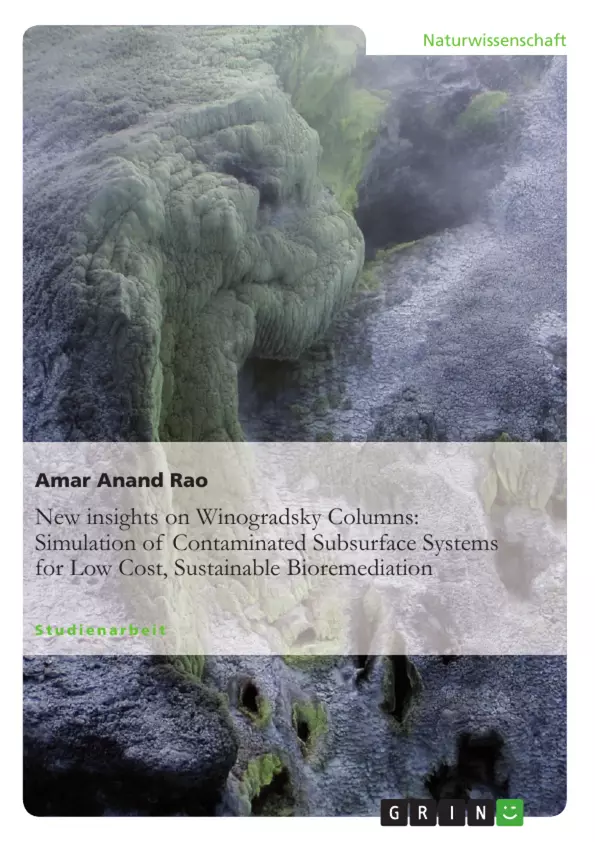Everything is everywhere. The environment selects. Practical applications possible out of winogradsky column like using it as a universal enrichment medium for all microbes to grow as they are and also to isolate and evolve purpose based microbes for degradation studies. Nature is just a hidden Winogradsky column. Thus whatever mechanisms that underlies degradation in field is the same when simulated inside a winogradsky column. So we simulate all the constraints that face the degradation of hard substrates and the mechanisms inside this column to achieve results that can be immediately applied in field, without need of elaborate experimentation with artificial culture medium.
Table of Contents
- Abstract
- Keywords
- Introduction
- Chemical Processes within the Microbial Mat Community:
Objectives and Key Themes
This text explores the Winogradsky column as a model system for simulating contaminated subsurface environments and evaluating low-cost, sustainable bioremediation strategies. The text highlights the diverse metabolic capabilities of microbes within the column and their potential for degrading various pollutants.
- Microbial diversity and metabolic processes in Winogradsky columns
- Simulation of contaminated subsurface systems for bioremediation
- Biodegradation of pollutants, including polycyclic aromatic hydrocarbons (PAHs)
- Factors influencing microbial degradation rates
- The role of viruses in microbial ecology and evolution in subsurface environments
Chapter Summaries
- Abstract: Introduces the concept of Winogradsky columns as a versatile tool for studying microbial communities and their role in bioremediation. It emphasizes the potential of these columns for simulating real-world environments and developing practical applications.
- Keywords: Provides a list of key terms relevant to the text, including Winogradsky Column, microcosm, biofilm, microbial succession, simulation, degradation, and nutrient cycle.
- Introduction: Explains the fundamental principles behind the Winogradsky column and its ability to demonstrate the diverse metabolic strategies employed by prokaryotes. It also discusses the significance of viruses in shaping microbial communities in subsurface environments.
- Chemical Processes within the Microbial Mat Community: Presents a summary of the primary chemical reactions occurring within a Winogradsky column, including photosynthesis, aerobic respiration, chemolithotrophy, fermentation, sulfate reduction, and methanogenesis.
Keywords
The central concepts of this text revolve around Winogradsky Columns, microcosms, biofilms, microbial succession, bioremediation, degradation of pollutants, and nutrient cycles. The text focuses on utilizing the Winogradsky column as a model system to understand and potentially remediate polluted subsurface environments, particularly by studying the biodegradation of pollutants like PAHs.
- Quote paper
- T.S. Amar Anand Rao (Author), 2011, New insights on Winogradsky Columns: Simulation of Contaminated Subsurface Systems for Low Cost, Sustainable Bioremediation, Munich, GRIN Verlag, https://www.grin.com/document/184354



